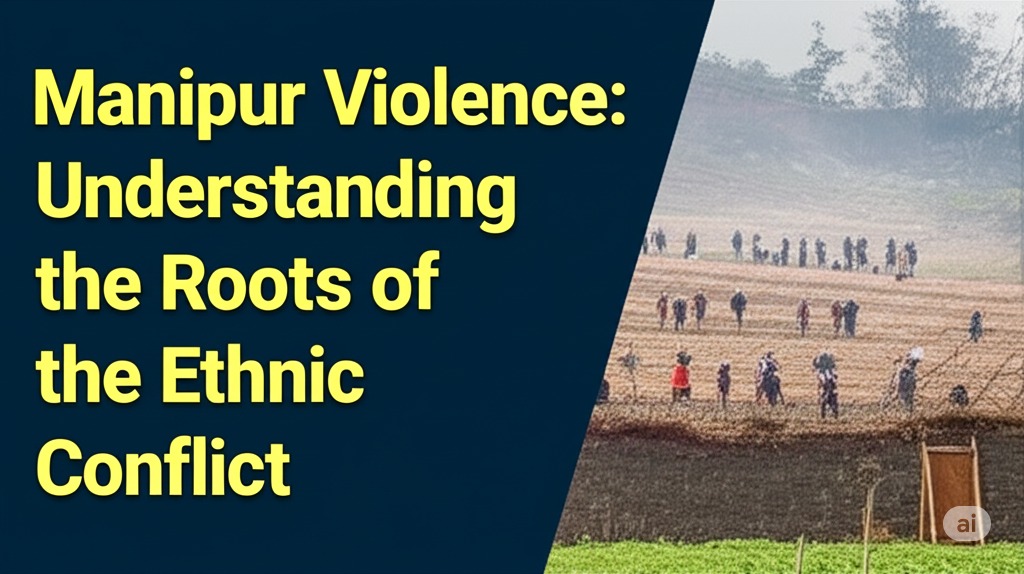Manipur Violence: Understanding the Roots of the Ethnic Conflict
Published on June 6, 2024 | Generated by AI
 🤖 AI-generated Image
🤖 AI-generated Image
Why It Matters
The ongoing ethnic violence in Manipur, a northeastern state in India, represents a critical humanitarian and security crisis with profound implications for regional stability. Key actors involved include the majority Meitei community residing primarily in the valley and the Kuki-Zo tribal communities inhabiting the hills, alongside the state and central governments. The conflict, which erupted in May 2023, stems from complex historical grievances, competition for land and resources, and differing perceptions of identity and rights. What's at stake is not only the lives and livelihoods of the state's diverse population but also the integrity of federal relations, the efficacy of governance in addressing ethnic tensions, and the potential for the conflict to spill over into neighboring regions. The urgency stems from the continued sporadic violence, significant displacement of people, and the deepening communal divide, necessitating immediate and sustained efforts towards de-escalation and peacebuilding.
Background & Timeline
The immediate trigger for the current wave of violence was a Manipur High Court order suggesting the state government consider including the Meitei community in the Scheduled Tribes (ST) category, a move strongly opposed by existing tribal communities who fear it would impact their land rights and affirmative action benefits. This order catalyzed a "Tribal Solidarity March" on May 3, 2023, which quickly devolved into violent clashes across the state. However, the roots of the conflict are much deeper, embedded in historical tensions between the valley-based Meiteis and the hill-based tribal groups over land ownership, political representation, and economic opportunities. Previous periods of unrest have occurred, but the current conflict has been marked by an unprecedented scale of violence, destruction of property, and internal displacement, fundamentally altering the social and demographic landscape of the state. Efforts to bridge the divide have historically faced significant challenges, highlighting the entrenched nature of the ethnic polarization.
What’s Happening Now
- Continued Sporadic Violence: Despite the presence of central security forces, incidents of firing, arson, and clashes continue in buffer zones and peripheral areas bordering Meitei and Kuki-Zo dominated regions.- Humanitarian Crisis: Tens of thousands of people remain displaced in relief camps, facing challenges related to shelter, food, healthcare, and education.- Political Stalemate: Efforts by both the state and central governments to initiate dialogue between the warring communities have largely failed to yield a breakthrough, with trust deficit remaining a significant hurdle.- Economic Disruption: The conflict has severely impacted the state's economy, disrupting supply chains, agriculture, and daily life, further exacerbating the humanitarian situation.- Calls for Separate Administration: Amidst the violence, there have been persistent demands from Kuki-Zo groups for a separate administration, a proposal strongly opposed by the Meitei community, complicating potential political solutions.
What Could Happen Next
-
1. Partial De-escalation and Limited Dialogue – Reason and expected consequences: Sustained efforts by security forces may reduce the frequency and intensity of violent clashes. This could create a limited window for initial, perhaps indirect, communication between community leaders, potentially facilitated by civil society or religious groups. The consequence would be a reduction in casualties and destruction, but the fundamental issues causing the conflict would remain unresolved, leading to continued tension and the persistence of displacement camps.2. Protracted Low-Intensity Conflict with Deepening Divide – Drivers and risks: Failure of political initiatives and continued lack of trust could see the conflict continuing at a low level, characterized by sporadic violence, economic stagnation, and a worsening humanitarian situation. Drivers include the proliferation of arms within communities, entrenched political positions, and potential external influences exacerbating tensions. Risks include further radicalization of youth, long-term displacement, and the creation of permanent geographical and social divisions within the state.3. Escalation to Wider Unrest – Low/high probability with justification: While authorities are working to contain the conflict, a major incident, failure of security measures, or collapse of political efforts could trigger a wider escalation. This has a moderate probability, as underlying tensions are extremely high and the proliferation of weapons increases the risk of large-scale clashes erupting in new areas or buffer zones. The justification lies in the deep-seated animosity and the difficulty in establishing effective communication channels between the communities.
This article is generated using AI-assisted summaries and verified timelines.
